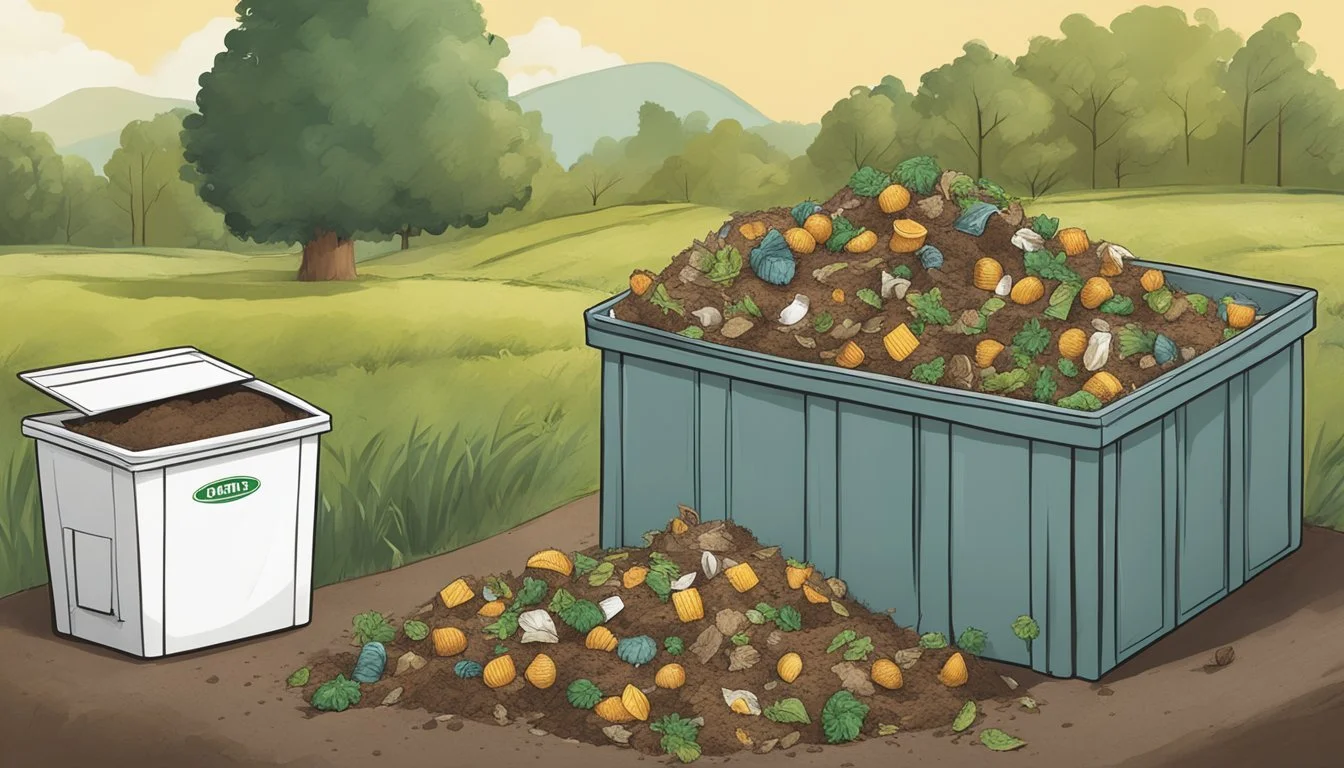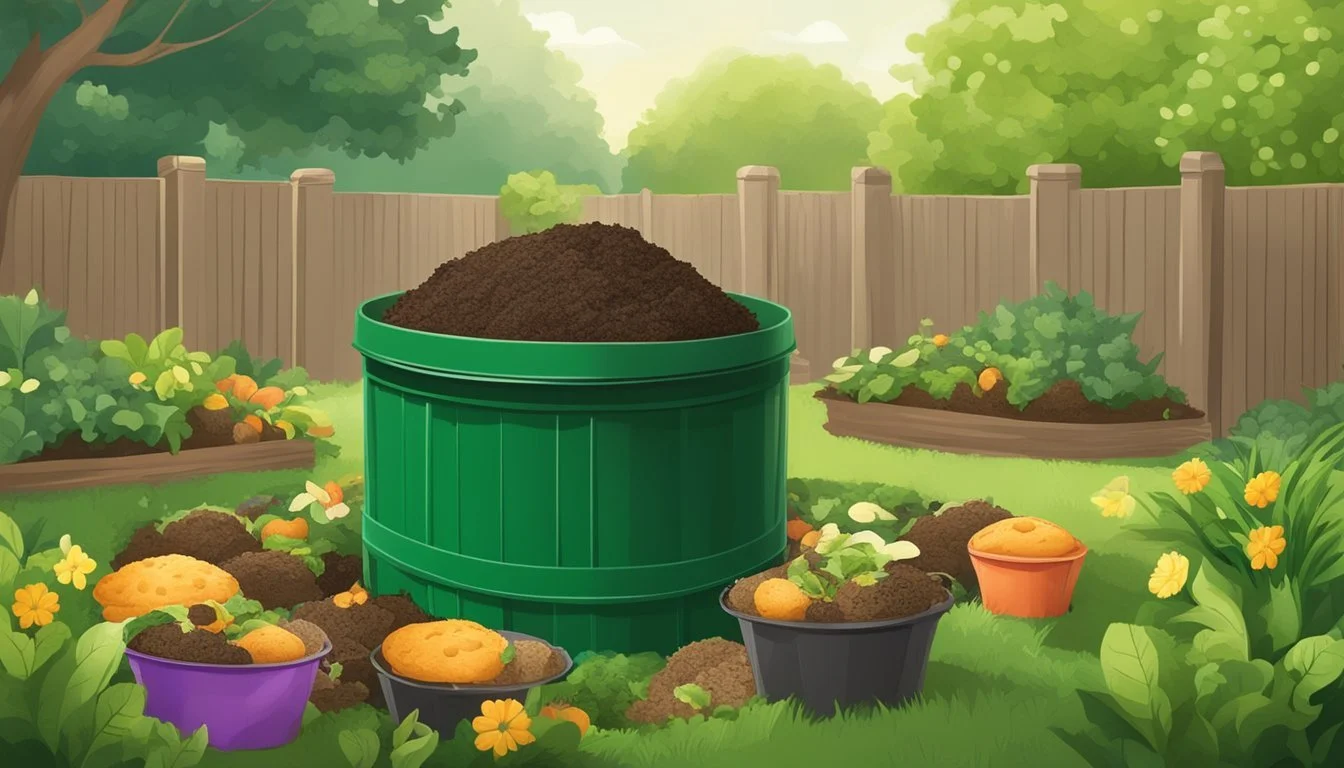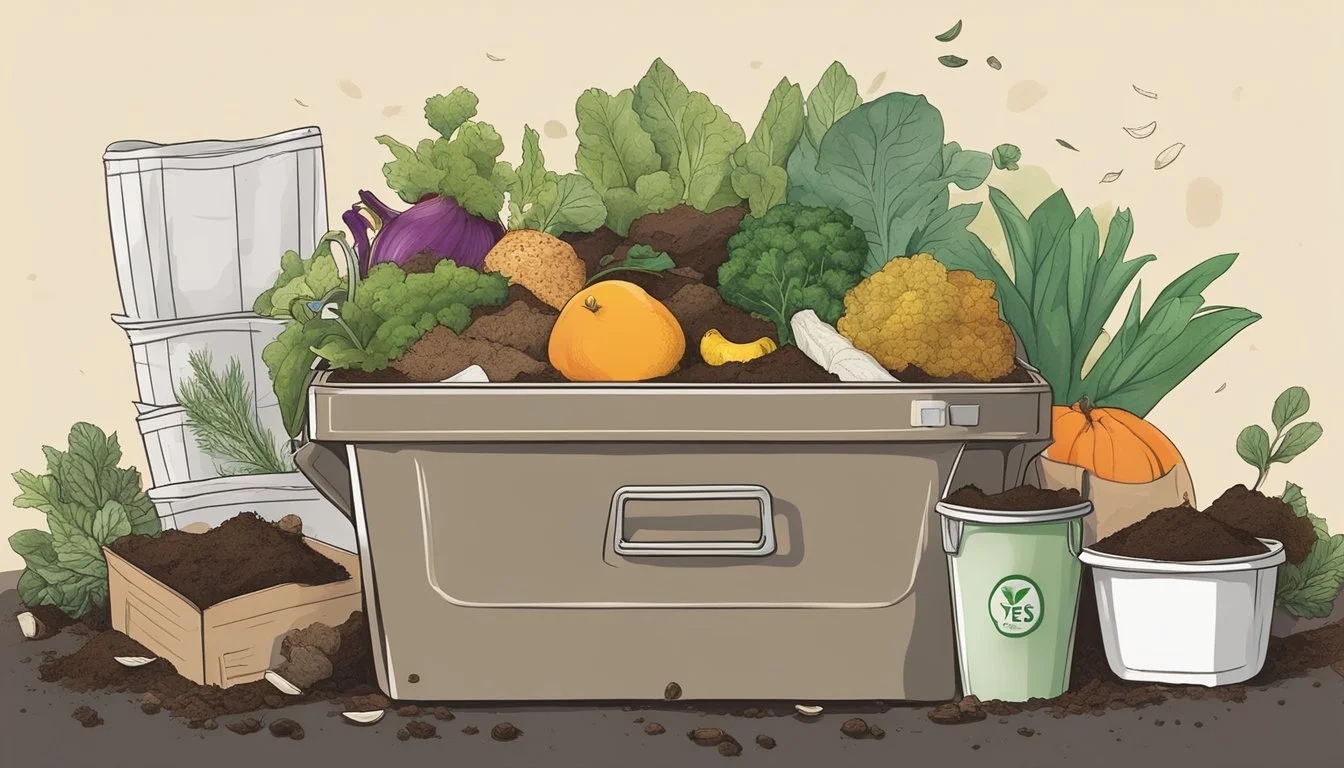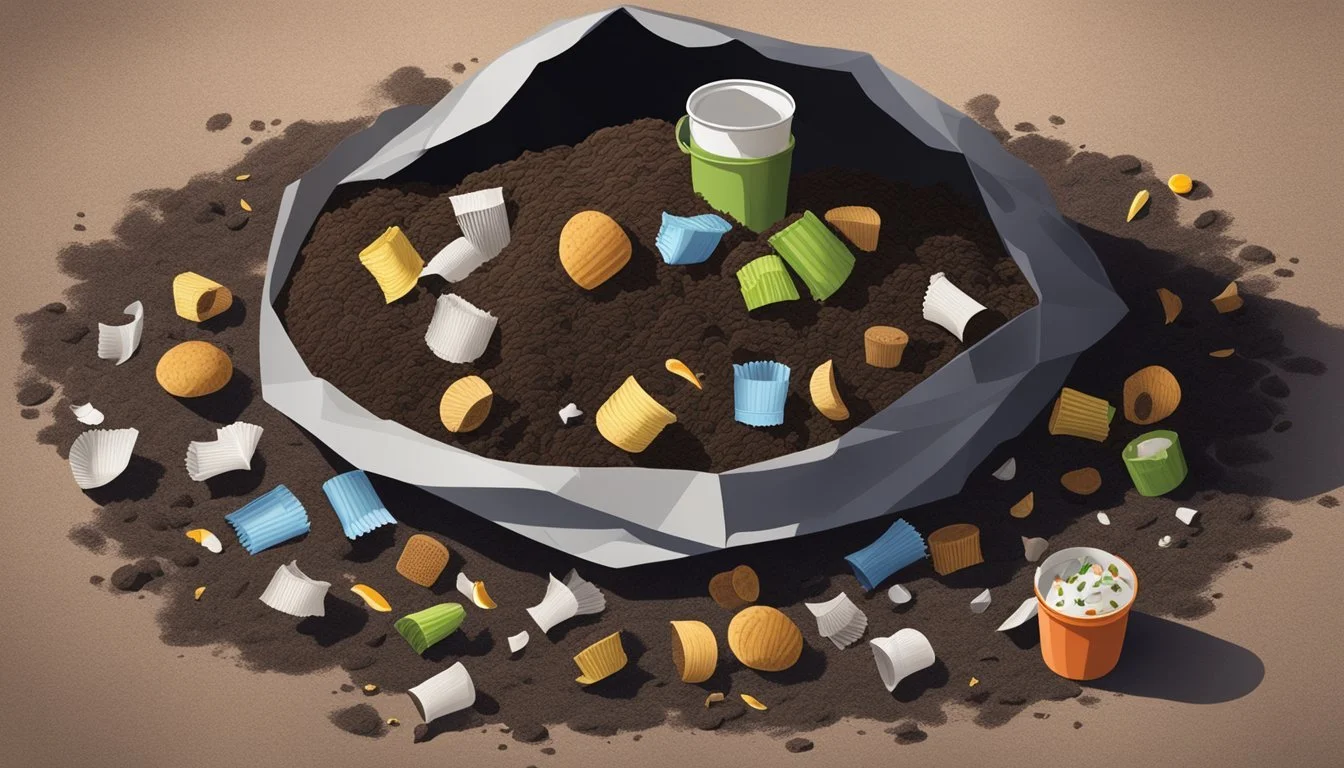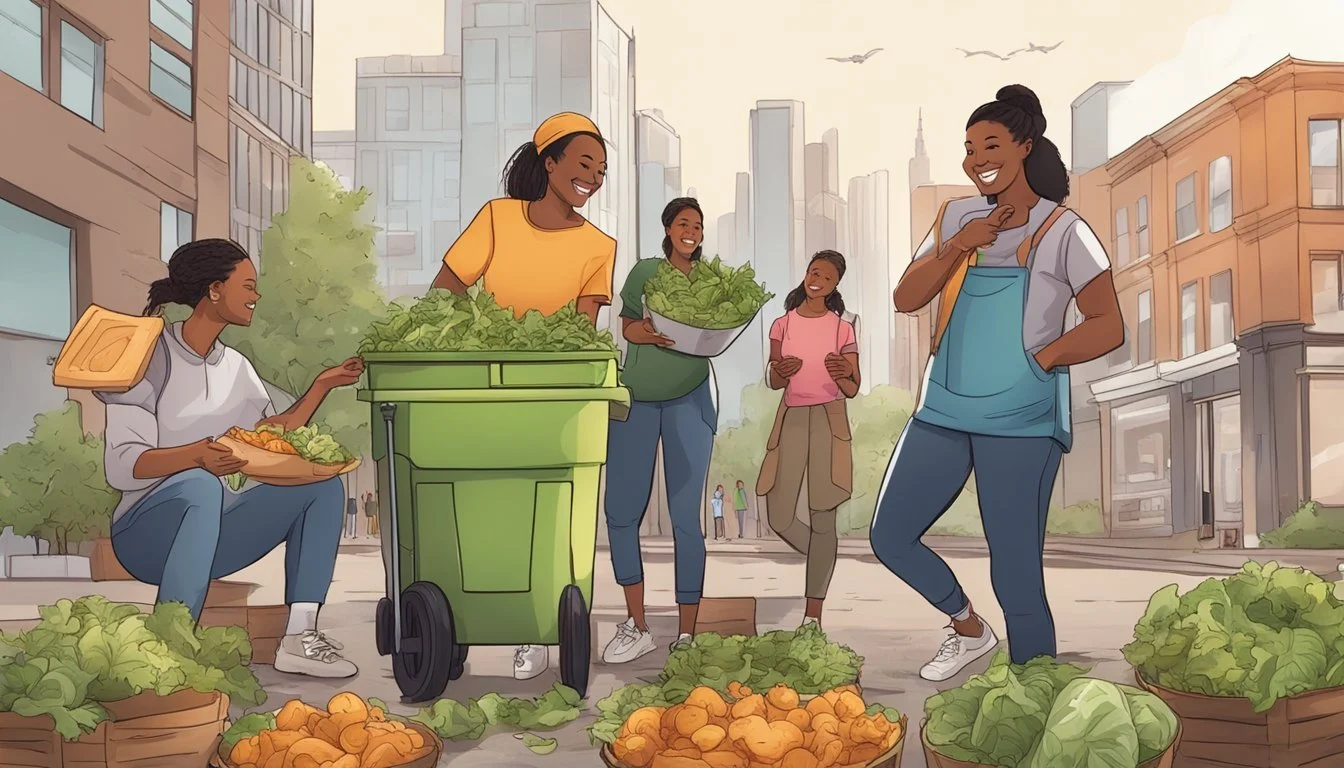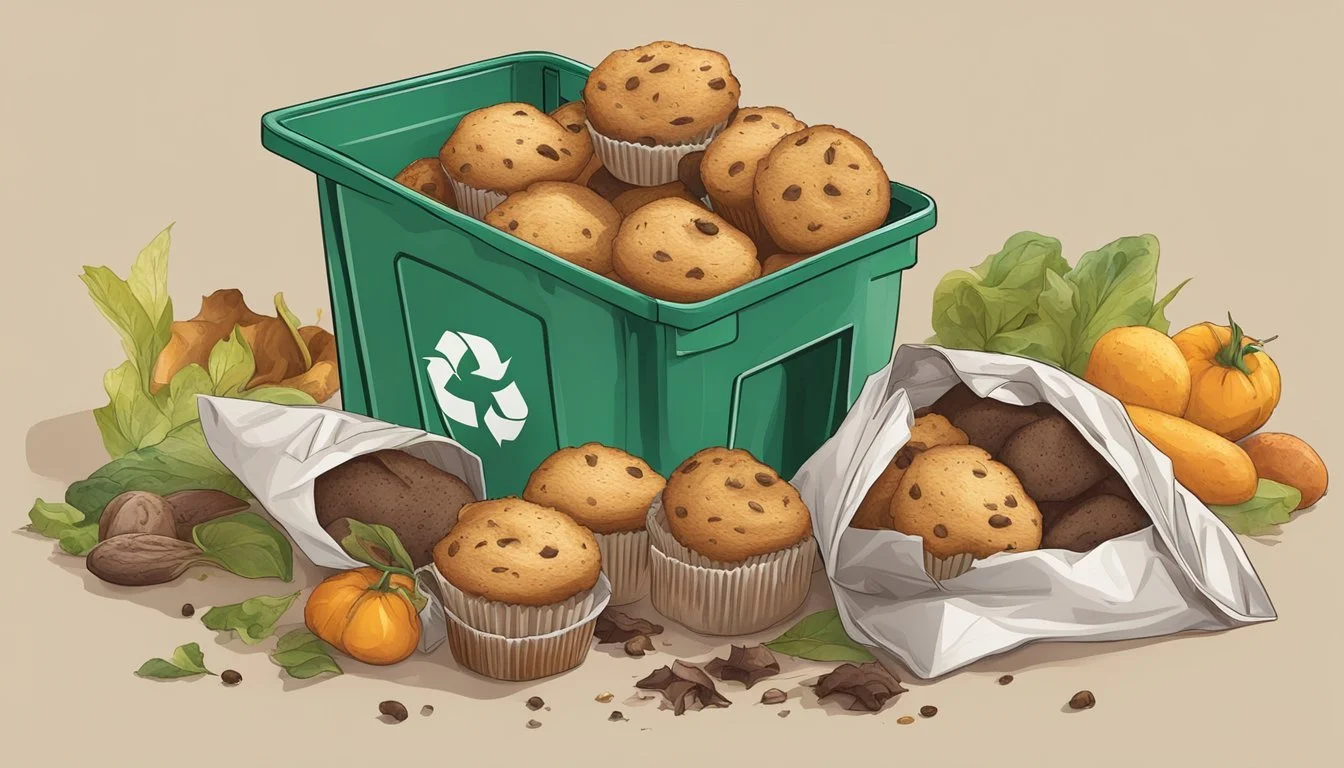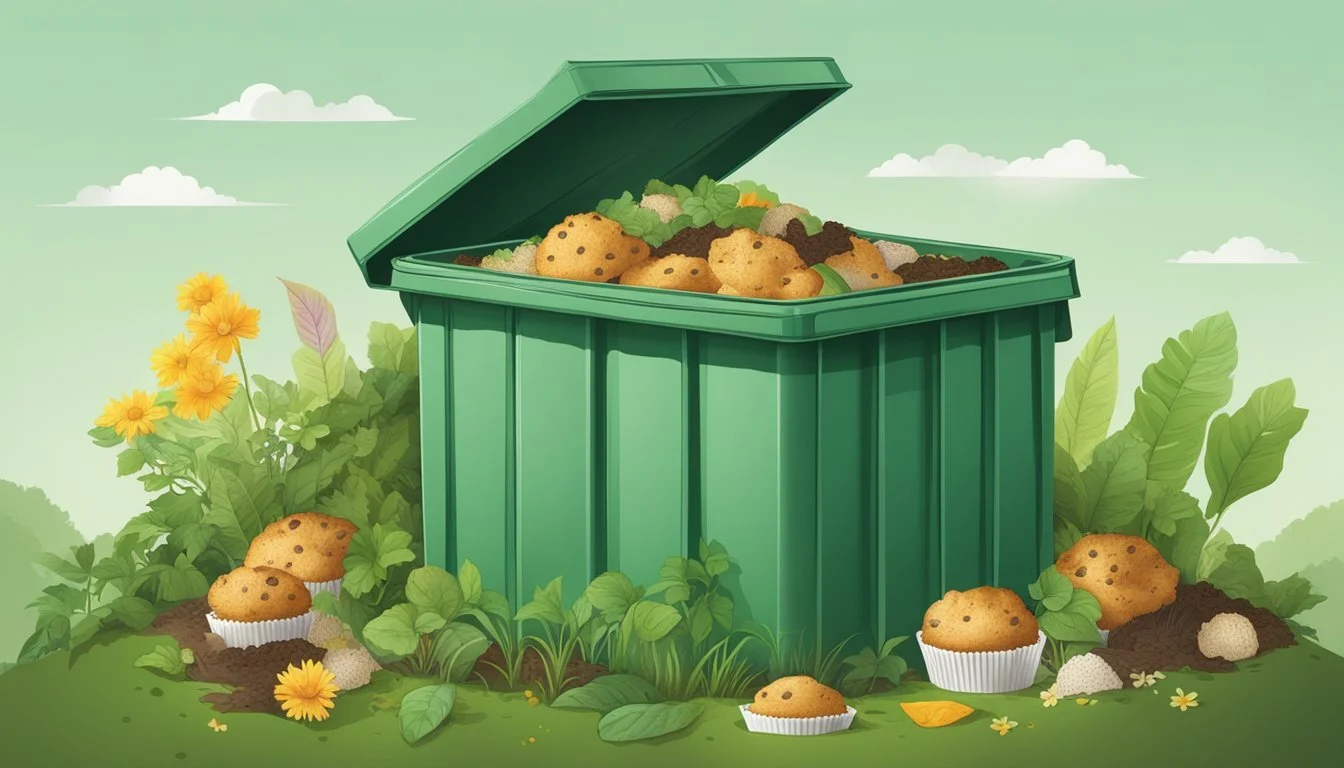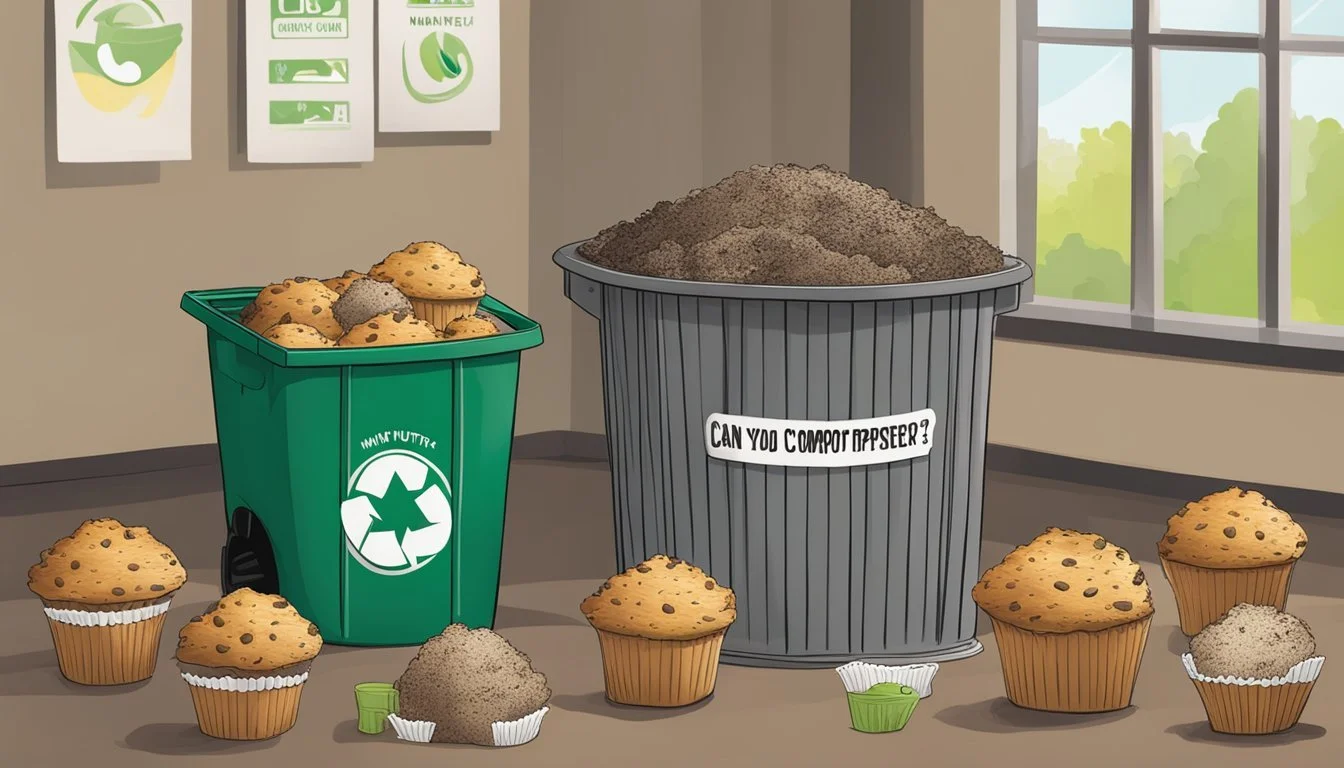Can You Compost Muffin Wrappers?
Understanding Biodegradable Options
Composting is a process that turns organic waste into rich soil, ideal for gardening and agriculture. The compost pile is not just limited to food scraps like fruits and vegetables—it can also include a variety of other items, such as papers and certain types of packaging. However, the compostability of these items often depends on the materials they are made from.
Muffin wrappers, commonly found in households and bakeries, may seem like a good candidate for composting because they appear to be made primarily of paper. In practice, the decision to compost muffin wrappers hinges on the materials used in their production. Biodegradable wrappers made without a plastic or wax coating can decompose with relative ease in a compost system.
On the other hand, muffin wrappers coated with synthetic materials to prevent sticking and grease seepage are less likely to break down during the composting process. Such items could introduce contaminants into the compost or simply fail to decompose, undermining the quality and usability of the end product. Therefore, confirming the composition of muffin wrappers is crucial before adding them to a compost pile.
What Is Compost?
Compost is a cornerstone for sustainable gardening and plays a vital role in enriching soil with essential nutrients. It supports a circular approach to waste reduction by recycling organic materials into valuable amendments for the earth.
Definition and Benefits
Compost is the end result of a controlled process called composting, in which organic matter breaks down into a stable soil-like substance. This process occurs thanks to the relentless work of microorganisms, worms, and other decomposers. Properly managed, compost can be a rich source of nitrogen, carbon, and other micronutrients, beneficial for plant growth and soil health.
The benefits of compost include:
Improvement of soil structure, which fosters plant root development.
Enhanced water retention in the soil, reducing the need for frequent watering.
Provision of essential nutrients to the soil, which reduce the need for chemical fertilizers.
Encouragement of biological activity in the soil, including helpful bacteria and fungi.
Constituents of Healthy Compost
Healthy compost depends on a balanced mix of two types of organic materials:
Greens: Rich in nitrogen, such as fruit and vegetable scraps, coffee grounds, and fresh plant materials.
Browns: High in carbon, like dry leaves, straw, paper, and wood chips.
Microorganisms require both types of materials to thrive and break down the organic matter efficiently. The ideal ratio is typically about 2-3 parts browns to 1 part greens. Maintaining this balance is crucial as too much nitrogen can lead to a smelly pile, whereas too much carbon can slow the decomposition process. Regular aeration and monitoring the moisture level are also essential practices to accelerate decomposition and achieve a quality compost.
Can You Compost Muffin Wrappers?
When considering whether muffin wrappers can be added to a compost pile, one needs to distinguish between biodegradable and non-biodegradable materials. The compostability of the wrapper directly affects its suitability for the compost process and its impact on recycling and landfill contribution.
Biodegradable vs. Non-Biodegradable Wrappers
Biodegradable wrappers are typically made from natural paper without a plastic or wax lining. These can break down in compost:
Paper muffin wrappers
Yes, if unlined and not heavily inked
Maybe, if lightly coated with a plant-based material
Non-biodegradable wrappers often contain synthetic coatings to prevent sticking and grease absorption. These should not be composted as they do not break down easily:
Plastic-lined or wax-coated wrappers
No, as the synthetic materials are not suitable for composting
Issues With Composting Certain Wrappers
There are several concerns with composting certain types of muffin wrappers:
Coatings: Wrappers with petroleum-based wax or plastic cannot decompose as natural organisms cannot break them down.
Contamination: Heavily inked or dyed papers may introduce toxins into the compost.
Recycling vs. Composting: Some wrappers may be more suitable for recycling, especially if the local facilities can process them but they are not compostable.
In summary, whether a muffin wrapper can be composted depends on its material composition. Fully paper-based wrappers are generally compostable, whereas plastic or wax-coated wrappers are not and potentially belong in recycling or trash.
Materials Suitable for Composting
In composting, breaking down organic matter into nutrient-rich soil amendment involves selecting appropriate materials. The following categories encompass the most commonly accepted items for composting.
Fruit and Vegetable Scraps
Fruit and vegetable scraps are the cornerstone of any compost pile. These items are high in nitrogen, which accelerates the decomposition process. Examples include:
Apple cores
Banana peels
Carrot tops
Lettuce leaves
It's important to chop larger pieces to speed up composting.
Garden and Yard Waste
Garden and yard waste contribute to the "brown materials" necessary for composting, providing a source of carbon. Suitable garden and yard waste includes:
Grass clippings - Ensure they are not treated with pesticides.
Leaves - They should be dry and shredded.
Small branches - Cutting them into smaller pieces aids in faster breakdown.
Maintaining a balance between green and brown materials is critical to compost health.
Paper and Cardboard Products
Paper and cardboard are excellent sources of carbon and can be composted if they are not coated with plastic or wax. The following paper products can be added to a compost pile:
Newspaper (shredded)
Cardboard (non-waxed, broken down into small pieces)
Paper napkins and towels (unbleached and free of oils or heavy residues)
Paper plates (must be uncoated and free from food residue)
Dense cardboard should be soaked in water to hasten decomposition. Avoid colored or glossy paper, as it may contain harmful chemicals.
Items to Avoid in Composting
When composting, certain items can introduce pathogens, pests, or pollutants into the pile. These items disrupt the composting process and can harm the resulting compost's quality and safety.
Certain Food Wastes
Meat and Dairy Products: These items can attract pests and create unpleasant odors, and they may contain pathogens that are harmful when spread in gardens.
Fats, Grease, and Oils: These substances can cause imbalance in the compost pile, prevent aeration, and attract pests.
Bones: They decompose very slowly and may become a vector for pests or pathogens.
Cooked Foods Containing Meat or Dairy: They possess the same concerns as raw meat and dairy, but they can also carry additional cooked food contaminants.
Non-Organic Materials
Plastic: Not biodegradable and can leach harmful chemicals into the compost and subsequently into your garden soil.
Pet Waste: Can contain parasites and pathogens that are not always broken down during the composting process.
Toxic Substances: Any materials containing toxic chemicals should not be included in compost as they can persist in the soil and be taken up by plants.
Composting Best Practices
When composting, one must be mindful of material balance and environmental conditions to create fertile compost effectively.
Balancing Greens and Browns
In composting, Greens refer to nitrogen-rich materials such as food scraps from the kitchen which includes paper muffin wrappers, provided they are not coated with plastic. Browns are carbon-rich and encompass dry leaves and untreated wood chips from the garden. The ideal mix for composting is roughly a 3:1 volume ratio of browns to greens. This maintains a healthy balance for microbial activity, ensuring efficient decomposition.
Table: Material Composition in Composting
Browns (Carbon-rich) Greens (Nitrogen-rich) Dry Leaves Fruit and Vegetable Scraps Untreated Wood Chips Coffee Grounds Shredded Paper Tea Bags Cardboard Paper Muffin Wrappers
Maintaining Proper Conditions
Composting requires one to maintain certain environmental conditions:
Water: The compost pile should be moist, but not soaked, akin to the wetness of a wrung-out sponge.
Air Circulation: Regular turning of the compost pile is essential to provide oxygen, which fuels the decomposing organisms.
Temperature: A compost pile should ideally be kept between 135°F and 160°F. Temperature affects the speed of decomposition—too low can slow the process, while too high can kill beneficial microorganisms.
One must ensure that muffin wrappers and similar items do not introduce contaminants into the compost which can disrupt these conditions.
Environmental Impact of Composting
Composting plays a significant role in waste management and soil enhancement by diverting organic waste from landfills and improving soil composition.
Reduction of Waste in Landfills
One of the primary environmental benefits of composting is its ability to reduce the amount of waste sent to landfills. Landfill spaces are finite and the accumulation of waste can lead to increased production of greenhouse gases, particularly methane, a potent greenhouse gas. When organic matter such as food scraps and yard waste is composted, it helps to decrease the volume of waste in landfills. Research indicates that a sizeable percentage of what ends up in landfills is compostable material that could otherwise contribute to soil health if composted.
Contribution to Soil Health
Composting enhances soil quality and supports plant growth. The process converts organic waste into nutrient-rich humus, which improves soil structure, moisture retention, and aeration. Compost contains essential nutrients for plant life and thus contributes directly to the nutrient cycle, promoting a more sustainable and organic approach to agriculture and landscaping. The use of compost can also reduce dependence on chemical fertilizers, leading to fewer contaminants in the ecosystem. By enriching the soil, composting supports biodiversity and builds resilience in local ecosystems.
Community and Urban Composting
In urban settings, composting is a collective effort that mitigates waste and enriches gardens. It encompasses a spectrum from individual to community-led projects, addressing unique urban challenges along the way.
Individual vs. Community Efforts
Community and urban composting initiatives are crucial for cities where individual space may be limited. When individuals lack the capacity for on-site composting, community composting serves as a collaborative solution. Typically, community gardens and urban farms often include communal composting areas where residents can contribute kitchen and garden waste. These shared efforts not only recycle waste but also foster community engagement.
In contrast, individual efforts, although smaller in scale, contribute significantly to the broader urban composting ecosystem. These efforts take place on balconies, in backyards, or even indoors using specialized composting bins designed for urban environments. The choice between individual and community approaches often hinges on personal circumstances, space availability, and the composting goals of the people involved.
Urban Composting Challenges
Urban composting presents distinct challenges that are not as prevalent in rural or suburban environments. Some of these include:
Space Constraints: Limited space in urban areas can restrict the size and scope of composting operations.
Neighbor Concerns: Misconceptions about compost attracting pests and causing odors can lead to resistance from neighbors and landlords.
Regulation and Policy: Composting in cities often must navigate complex city ordinances and regulations that may restrict where and how composting can occur.
To overcome these obstacles, effective urban composting programs focus on education about proper composting techniques to alleviate concerns and emphasize the environmental benefits of composting. They also work within the regulatory framework to create accessible and functional composting systems for urban residents.
Composting Innovations
The realm of composting is evolving with significant strides in technology and material science, enhancing the efficiency of the process and the range of compostable items.
Technological Advances in Composting
Recent years have seen a surge in technological innovations aimed at improving composting techniques. Automated composting systems are one such development, which employs sensors and computer algorithms to optimize decay rates, oxygen levels, and moisture within compost bins. Researchers and companies have also introduced robots that can sort compostable waste more effectively, minimizing human involvement and streamlining the composting process.
On a larger scale, advancements include high-tech, in-vessel composters, which can convert waste to compost in just a few weeks compared to months. These closed systems control environmental conditions tightly, creating ideal conditions for rapid decomposition. Another notable innovation is aerated static pile composting, a process that introduces forced air into compost piles to maintain aerobic conditions and expedite the composting process.
New Compostable Material Developments
The development of new compostable materials is crucial to waste reduction strategies. Continuous research efforts have led to the creation of packaging and products that can be broken down within a home or industrial composting system. These items are typically made from plant-based polymers, which microbes in compost can digest.
One example involves fast food wrappers, where certain food-safe papers and coatings have been devised to replace conventional plastic films, making them suitable for composting. Muffin and cupcake wrappers are now increasingly available in fully compostable forms, free from plastic coatings, to ensure they can be disposed of without harming the environment.
Through an integration of technology and material science, these innovations are propelling composting into a streamlined and more sustainable practice suited for modern environmental needs.
Frequently Asked Questions
In exploring the compostability of muffin wrappers, it is important to address common misconceptions and to understand the decomposition time frame for different items.
What Items Are Commonly Misunderstood as Compostable?
Muffin Wrappers: Not all muffin wrappers are compostable. Those made purely of paper without a plastic or wax coating can typically be composted. If the wrapper tears easily and feels like standard paper, it is likely compostable.
Coated Food Packaging: Many food packaging items, including some fast food wrappers, have a wax or plastic coating to prevent grease from seeping through. These coatings can render them non-compostable.
Bioplastics: Items labeled as biodegradable or made from plant-based plastics are not always suitable for home composting and might require industrial composting facilities.
How Long Does It Take for Various Items to Compose?
The decomposition rate for compostable items can vary based on the composting environment and materials involved:
Uncoated Paper Products: Including non-glossy muffin wrappers, typically take about 2-6 weeks to break down in a home composting environment.
Food Waste: General food scraps can decompose in anywhere from 2 weeks to several months, depending on the type of food and composting conditions.
Coated Paper Products: Items with a protective coating, if compostable, can take several months to decompose due to the additional materials that need to be broken down.
It is always recommended to check with local composting guidelines to ensure the proper disposal of muffin wrappers and other compostable materials.
Conclusion
When it comes to composting muffin wrappers, one must carefully consider the materials the wrappers are made of. Biodegradable or paper-based wrappers without a plastic lining can usually be composted. They will decompose naturally, contributing to a healthy compost mix that benefits the environment by reducing landfill waste.
However, wrappers that are glossy or have a metallic sheen, often indicating a plastic or foil lining, are not suitable for composting. These materials do not break down easily and may introduce contaminants into the compost.
For environmentally conscious individuals focusing on composting with an aim to improve soil health, it is advisable to:
Check if wrappers are marked as compostable: Look for certifications or manufacturer indications that the product is safe for composting.
Perform a simple test: If the origin of the wrapper is unknown, one can tear it easily; it likely does not contain plastic and may be compostable.
Seek out eco-friendly options: Choose muffins with wrappers that are explicitly labeled as compostable or biodegradable.
By ensuring only appropriate materials enter the compost bin, they contribute to a more sustainable practice that nurtures the environment. Composting appropriate muffin wrappers reduces waste and supports the cycle of organic matter returning to the earth.
Additional Resources
The resources provided in this section cater to those seeking to expand their knowledge about composting muffin wrappers and engage with initiatives that support sustainable waste management practices.
Educational Materials
Educational materials are essential for understanding the compostability of muffin wrappers and its impact on the environment. Researchers and experts have compiled a variety of documents and guides that:
Offer detailed insights into the types of materials suitable for composting.
Explore the process of decomposition and its effects on different compostable materials.
These materials are available through various online platforms, including environmental blogs, government websites on waste management, and digital libraries of academic research papers.
Community Programs
Community programs play a pivotal role in promoting and educating the public on proper composting practices. They can provide:
Hands-on experiences with composting techniques, including workshops on identifying compostable materials.
Opportunities to participate in local composting schemes or initiatives that encourage sustainable waste disposal.
Residents can usually find information about these programs through local government offices, community centers, or environmental advocacy groups. These entities often collaborate to organize events and offer resources that are designed to foster a community-oriented approach to composting.
References
When considering the compostability of muffin wrappers, one must consult reliable sources for accurate information. The characteristics of these wrappers can vary widely based on the materials used in their production.
Material Composition: It is essential to determine whether the muffin wrappers are made from paper or contain a plastic lining. Paper-based wrappers without any plastic, waxes, or additional coatings are typically compostable.
Composting Methods: The composting process and environment can affect the degradation of materials. Home composting systems may not reach the same temperatures as industrial setups, possibly affecting the decomposition of muffin wrappers.
Environmental Impact: Evaluating the sustainability of composting muffin wrappers involves understanding the environmental impact of adding such items to compost heaps.
Selected Sources:
Vanderlinden, Colleen. "75 Things You Can Compost, But Thought You Couldn't." Home & Garden Green Living. Updated May 20, 2022.
Rural Sprout. "Can I Compost That? 100+ Things You Can & Should Compost."
MorningChores. "88 Everyday Things You Can Compost (and 9 You Shouldn't)."
"Can You Compost Fast Food Wrappers? A Guide To Composting Fast Food Packaging."
These references provide a foundation for understanding the broader context of composting and specifically the compostability of items like muffin wrappers within various systems. They offer guidance on the materials that can be included in compost piles and the considerations that must be taken into account when determining an item's suitability for composting.
About the Author
The author of this article is a seasoned environmental writer with a robust background in sustainable practices and waste management. She has spent over a decade researching and advocating for eco-friendly solutions, particularly in the realm of composting and reducing landfill waste.
Educationally, the author holds a Bachelor's degree in Environmental Science and a Master's degree in Sustainability. Her academic and professional journey has equipped her with a deep understanding of the composting process, as well as the ability to discern which materials are compostable.
In addition to a strong educational foundation, she has practical experience working with municipal composting facilities and local community gardens. This hands-on exposure has cemented her knowledge and fueled her passion for spreading awareness about composting and waste reduction methods.
Focus Areas: Composting, Waste Reduction, Sustainability
Published Works: Featured in environmental blogs, magazines, and journals.
Present Roles: Environmental Columnist, Guest Lecturer
The author's approach in her writing is always clear and straightforward, ensuring her readers understand the nuances of composting. Her articles aim to demystify recycling and composting practices, providing readers with actionable advice for everyday life. Through her work, she seeks to inspire positive environmental change and promote practices that are both feasible and sustainable.

